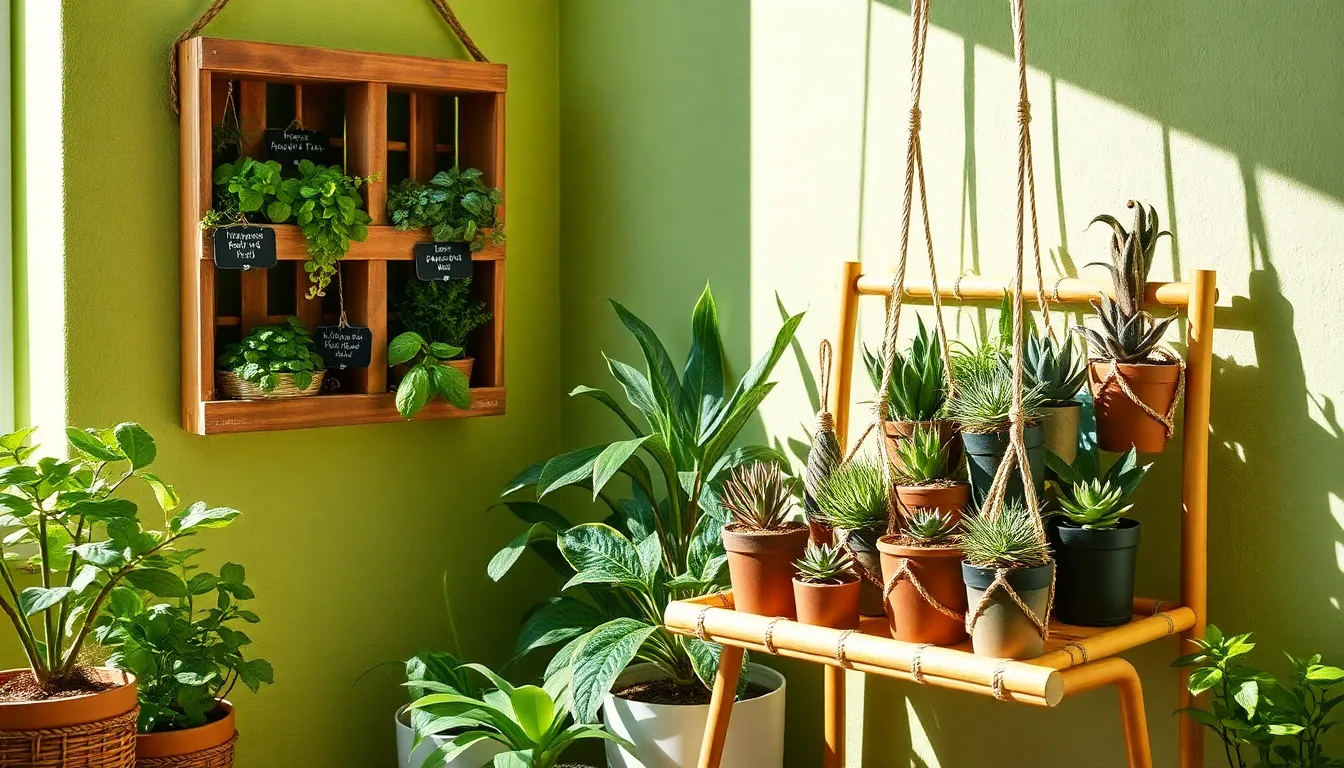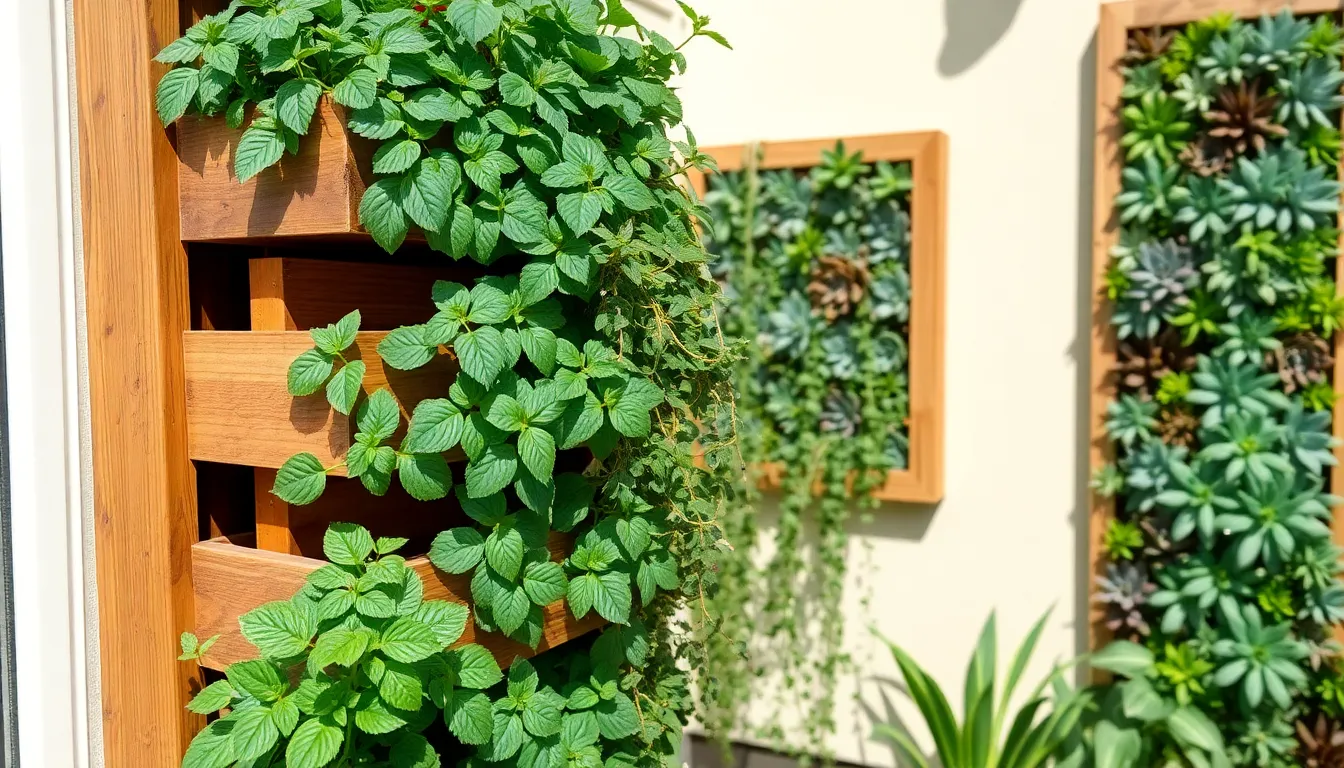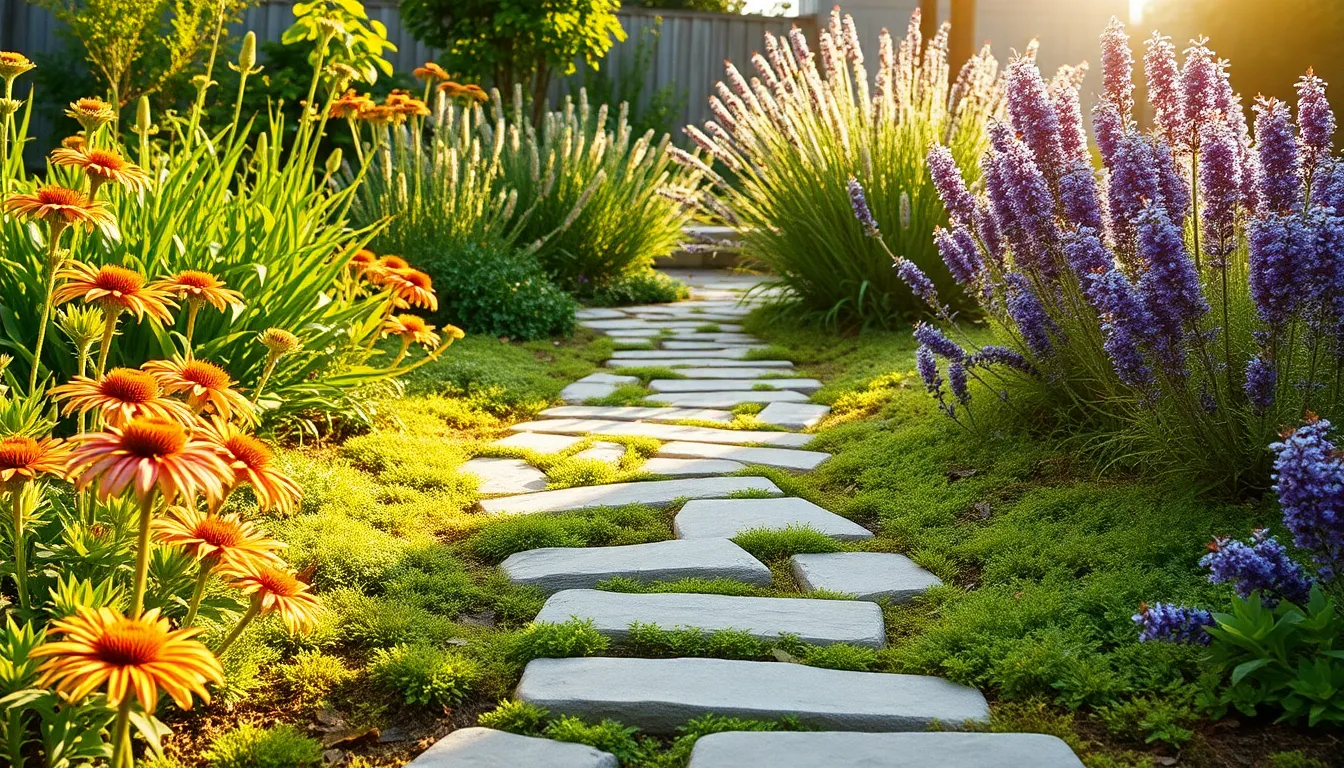In the heart of bustling city living or nestled in a cozy suburban nook, the desire to cultivate greenery is universal. Whether you’re a seasoned gardener with dirt under your nails or a novice eager to dip your fingers into the soil, transforming small spaces into lush, vibrant corners is both rewarding and accessible. Indoor gardening offers an oasis of calm and a splash of nature’s beauty within the confines of your home, making it an essential pursuit for those seeking a breath of fresh air in their everyday lives.
Small spaces need not limit your gardening ambitions. With a bit of creativity and the right projects, even the tiniest of apartments can become a gardener’s haven. In this article, we will explore a variety of DIY indoor gardening projects that cater to both limited space and diverse skill levels, ensuring that everyone can cultivate their green thumb. From vertical gardens that climb your walls to compact herb pots that bring flavor to your kitchen, these projects will inspire and guide you toward creating your own verdant retreat.
By delving into these projects, you’ll not only learn practical techniques for maximizing your space but also discover the joy of nurturing life in unexpected places. Each project is designed to be approachable, offering clear steps and insights to turn your indoor environment into a thriving ecosystem. As you embark on this journey, you’ll find that gardening is less about the space you have and more about the passion you bring. Let’s get started on crafting your little slice of nature right inside your home.
Choosing Compact Indoor Plants
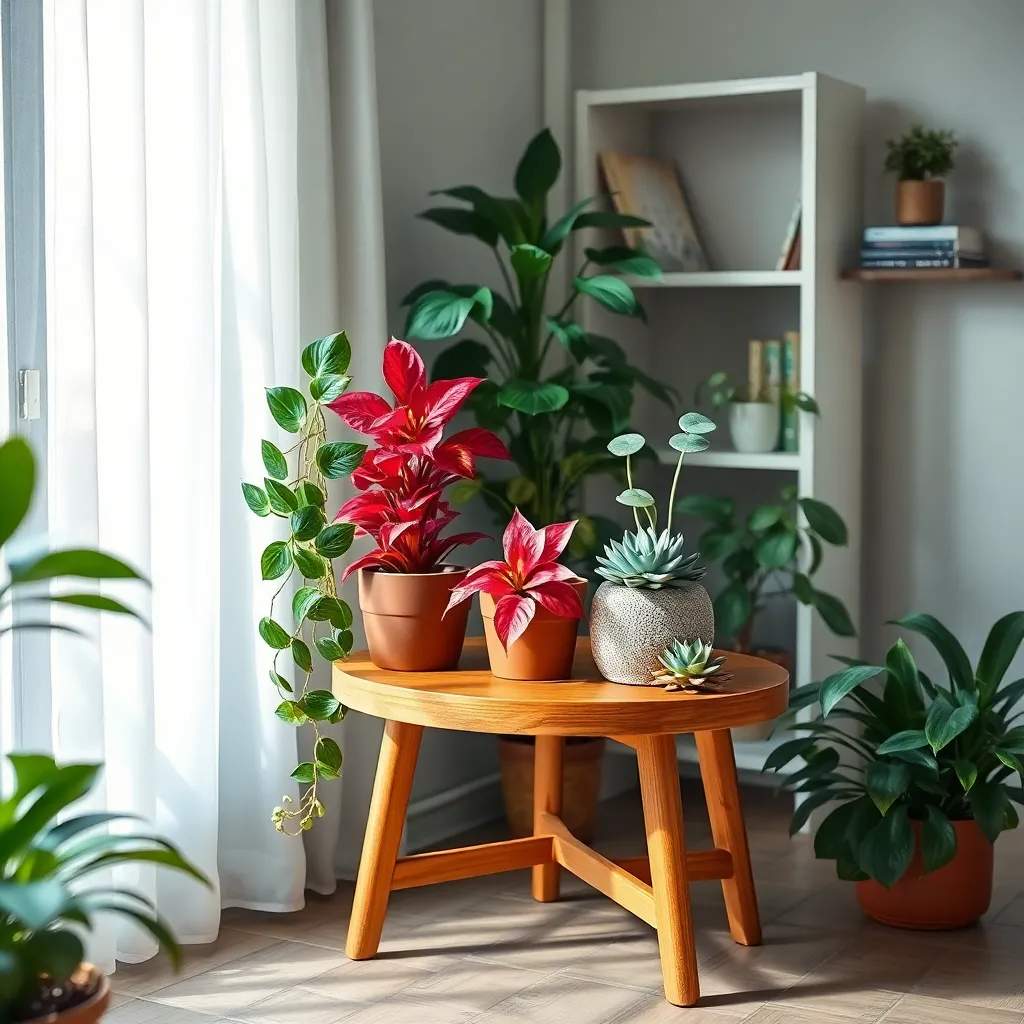
When choosing compact indoor plants, consider those that thrive in limited space and require minimal maintenance. **Succulents**, for instance, are excellent options due to their ability to store water, allowing them to survive with infrequent watering.
Additionally, **herbs like basil and mint** not only save space but also provide fresh ingredients for your kitchen. These plants need a sunny windowsill and can thrive in small pots with well-draining soil.
For a touch of greenery that cleans the air, the **Spider Plant** is a fantastic choice. It thrives in indirect sunlight and prefers to dry out between waterings, making it ideal for busy gardeners.
Advanced gardeners might experiment with **bonsai trees**, which require more attention but offer a beautiful, artistic touch to any room. Bonsai trees need specific soil mixes and precise watering techniques, so invest in a moisture meter to make caring for them easier.
To enhance your indoor garden’s aesthetic without overcrowding, use vertical space by installing hanging planters or wall-mounted pots. This setup not only maximizes space but also creates a vibrant display that draws the eye upward.
Crafting Space-Saving Plant Holders
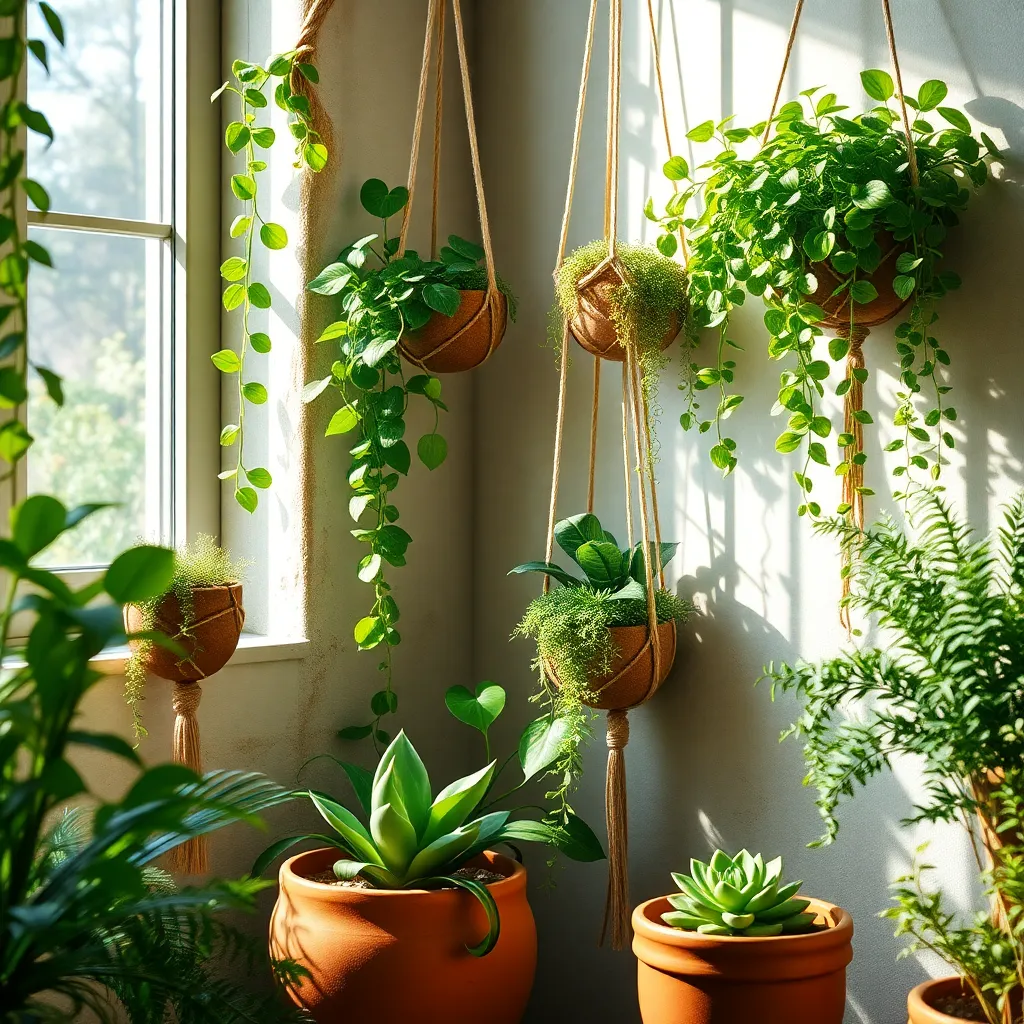
Creating space-saving plant holders can be both a creative and functional solution for small indoor gardening spaces. To start, consider using vertical wall planters that allow you to maximize available wall space while adding a touch of greenery to your home.
Hanging planters are another excellent option for saving floor space and can be easily crafted using macramé or repurposed materials like old jars or tins. Ensure to use a lightweight potting mix for these containers to reduce the weight and provide adequate drainage.
For those who enjoy a bit of DIY, constructing tiered plant stands can offer multiple levels for displaying your plants without occupying much room. Choosing materials like recycled wood or metal not only adds charm but also ensures durability for your plant holders.
Advanced gardeners might experiment with hydroponic systems, which can be tailored to fit compact spaces and provide a unique way to grow plants indoors. These systems often require specific nutrients and regular monitoring of water levels, but they can be a rewarding challenge for plant enthusiasts.
Vertical Gardening for Tight Areas
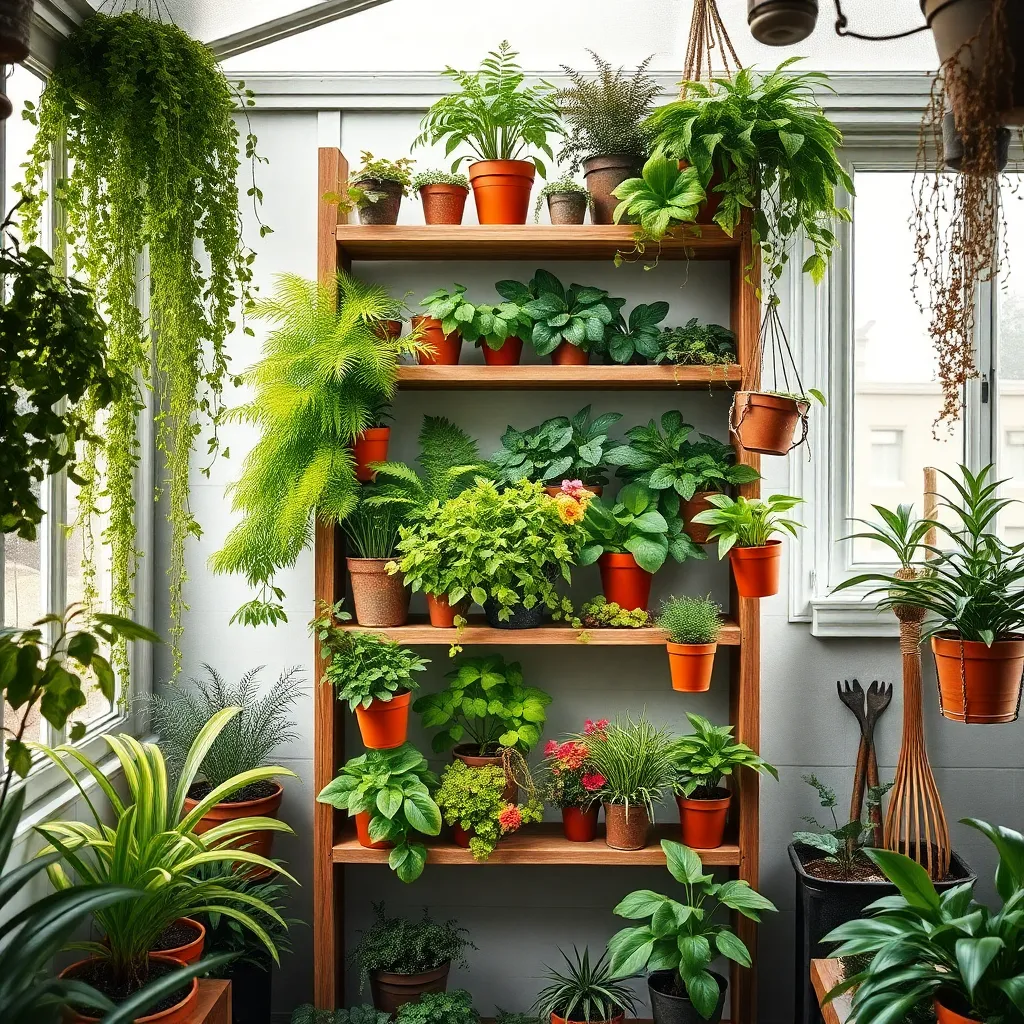
Vertical gardening is an excellent solution for making the most of tight spaces, allowing you to grow more plants without needing additional floor area. Consider using a variety of structures such as wall-mounted planters, hanging pockets, or tiered shelving to maximize your space.
For beginners, starting with a simple wall-mounted system can be an easy way to dive into vertical gardening. These systems often include small pots or pockets where you can plant herbs like basil, mint, and thyme, which thrive with regular watering and indirect sunlight.
More experienced gardeners might explore hydroponic vertical gardens, which allow for soil-free growth and can be tailored to grow a variety of plants. Ensure you maintain proper nutrient solutions and monitor pH levels regularly to keep your plants healthy and productive.
Regardless of your skill level, it’s crucial to select plants that suit the light conditions of your space. South-facing windows provide ample light for sun-loving plants like cherry tomatoes and strawberries, while north-facing areas can house shade-tolerant plants like ferns and philodendrons.
To maintain healthy vertical gardens, pay attention to watering needs, as vertical installations may dry out more quickly than traditional pots. Use a moisture meter to check soil levels, and water when the top inch feels dry to the touch.
Additionally, consider using lightweight, well-draining soil to prevent excess weight on your vertical structures and ensure roots receive adequate aeration. A simple mix of peat moss, perlite, and vermiculite can provide the ideal growing medium for most plants.
DIY Self-Watering Systems

Creating a DIY self-watering system can be a game-changer for indoor gardening, especially in small spaces where consistent care might be challenging. Start with a simple setup by using a plastic bottle or a glass jar, which can be easily adapted for any plant size.
To build a basic system, cut the bottle in half and invert the top portion into the bottom half, acting as a reservoir. Fill the inverted top with soil and plant your seeds or seedlings, ensuring the wick reaches the water below to naturally draw moisture upward.
Choose a wicking material like cotton string or strips of old t-shirts—these are effective in maintaining steady moisture. Adjust the wick length based on the plant’s water needs; longer wicks provide more water, ideal for thirstier plants like herbs or leafy greens.
For more advanced gardeners, consider using a capillary mat system that covers several pots, allowing multiple plants to benefit from consistent moisture. This method is perfect for those growing various plants with similar water requirements, as it simplifies maintenance and ensures even hydration.
Maximizing Natural Light Indoors
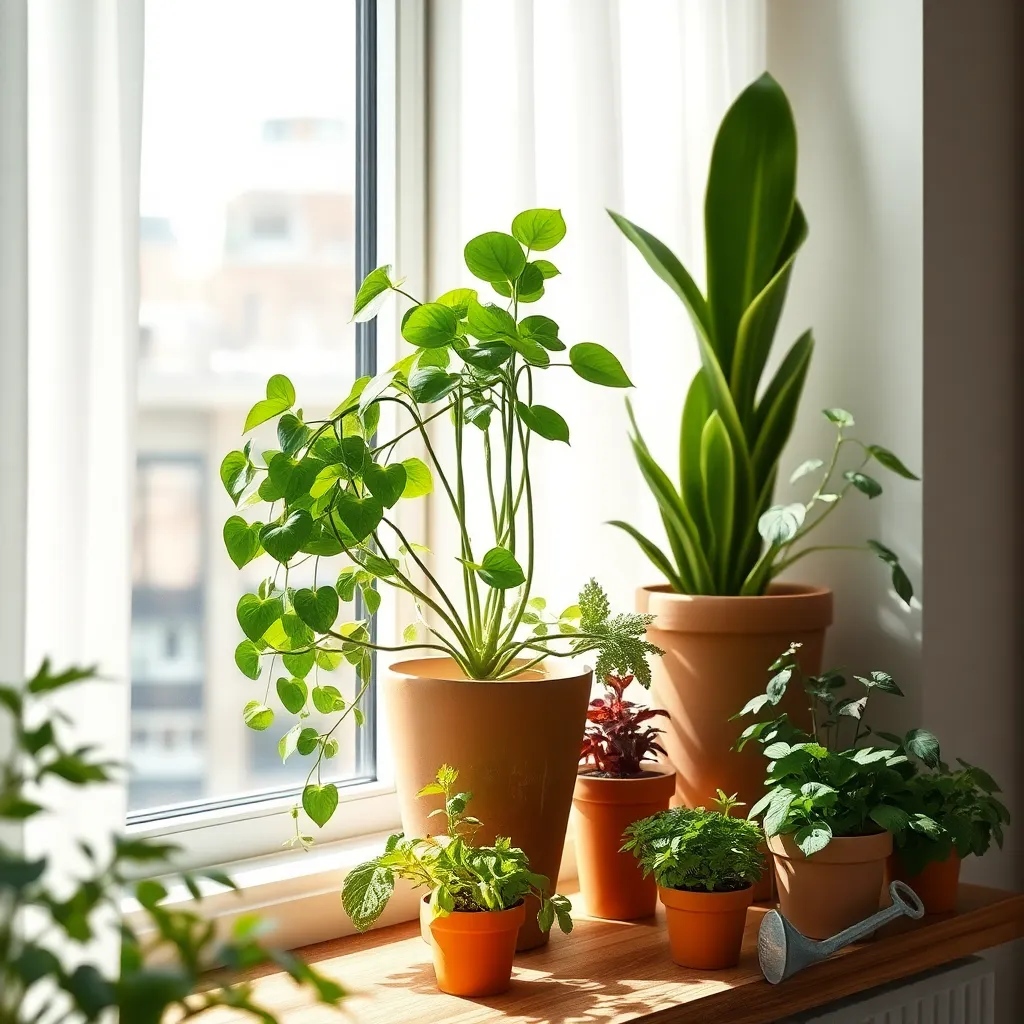
To make the most of natural light indoors, start by identifying the sunniest spots in your space; these are typically near south-facing windows. Consider using reflective surfaces like mirrors or light-colored walls to amplify available light, helping your plants thrive even in shaded areas.
Positioning your plants correctly is crucial for their growth; rotate them regularly to ensure even exposure to light. For plants that require more sunlight, such as succulents or herbs, place them on window sills or hang them in small pots close to the windows.
When natural light is limited, especially during winter months, supplement it with artificial grow lights, which can be tailored to suit the light needs of different plants. Choose full-spectrum LED grow lights for energy efficiency and optimal plant growth, adjusting the distance from plants to prevent light burn.
For advanced gardeners, consider using light meters to measure the intensity of light in various spots, allowing you to fine-tune plant placement. This can be particularly useful for plants with specific light requirements, such as African violets or orchids, ensuring they receive the right amount of light for blooming.
Conclusion: Growing Success with These Plants
In exploring ‘DIY Indoor Gardening Projects for Small Spaces,’ we unearthed five pivotal relationship concepts: nurturing growth together, cultivating patience, communicating needs through shared activities, celebrating small victories, and adapting to change with creativity. Each gardening endeavor mirrors the dynamics of nurturing a relationship, teaching us that with attention and care, even the smallest spaces can blossom into something beautiful.
As a next step, why not choose a simple indoor gardening project to embark on with your partner this week? Whether it’s a small herb garden or a succulent arrangement, this shared activity can become a canvas for collaboration and connection.
Remember, relationships—like plants—thrive on consistency and care. Bookmark this article for easy access to these insights whenever you need a gentle reminder on nurturing your relationship. By doing so, you’re investing in a resource that can support your journey toward a flourishing partnership.
Looking ahead, envision a future where your relationship continues to grow stronger, rooted in love and shared experiences. With each step you take together, may your bond deepen and your shared life bloom with joy.

